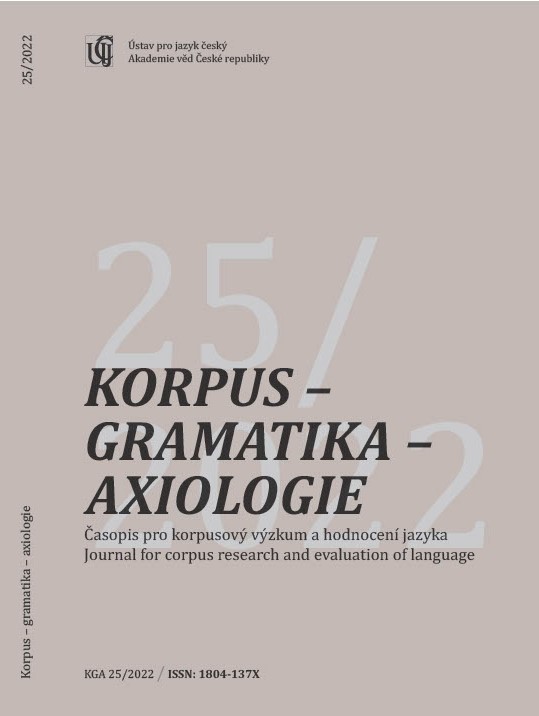Reflections on diachronic reflexivity: From the decausative to the deagentive, its relationship to the passive and beyond
Reflections on diachronic reflexivity: From the decausative to the deagentive, its relationship to the passive and beyond
Part I
Author(s): Aleš PůdaSubject(s): Language and Literature Studies, Applied Linguistics, Computational linguistics
Published by: AV ČR - Akademie věd České republiky - Ústav pro jazyk český
Keywords: constructional change; participial passive; (personal / impersonal / transitive impersonal) reflexive deagentive; reflexive decausative; transitional construction
Summary/Abstract: First, the structure and most significant findings of Jiří Pergler’s (2020) monographon the reflexive deagentive (= RD) in 15th–17th century Czech are presented. Thereafter,selected aspects that draw attention to the constructional approach to accounting for change(Traugott 2015; Smirnova & Sommerer 2020 et al.) are critically developed to show how thefeatures of precursor constructions change along the path towards the reflexive deagentive.By this we aim to emphasize the gradualness of change, favoring a model that posits context-inducedsmall-step reanalyses leading from the decausative to the deagentive construction,instead of positing a single ambiguous form (Pergler 2020), thus also abandoning the traditionaldichotomy (e.g. Comrie 1985; Haspelmath 1993; 2021 et al.) between the said constructions.We adapt a model from Heine (2002), according to which there are two successive stages in particular,called the bridging context and the switch context, which can account for the processand result of constructionalization (decausative → transitional → deagentive).Developing the notion of constructional networks (Fried 2013a) according to which reflexiveconstructions represent a web of family-resemblance relationships (Familienähnlichkeiten,Wittgenstein 1953), we treat the network structure of reflexive constructions as organizedprimarily by family inheritance, being united by genetically related but not identical syntaxand by genetically related but not identical semantics (AB…n → BC…n → CD…n → DE…n).With respect to the relation of the deagentive to the passive, we propose that divergent mannersof agent integration within two different inactive concepts (a processual one, in the caseof the decausative, and a stative one, in the case of the objective resultative) participated in theemergence of functionally different constructions, which have not generally been distinguishedin the relevant literature (e.g. Haspelmath 1990).
Journal: Korpus - gramatika - axiologie
- Issue Year: 2022
- Issue No: 25
- Page Range: 7-35
- Page Count: 29
- Language: English

